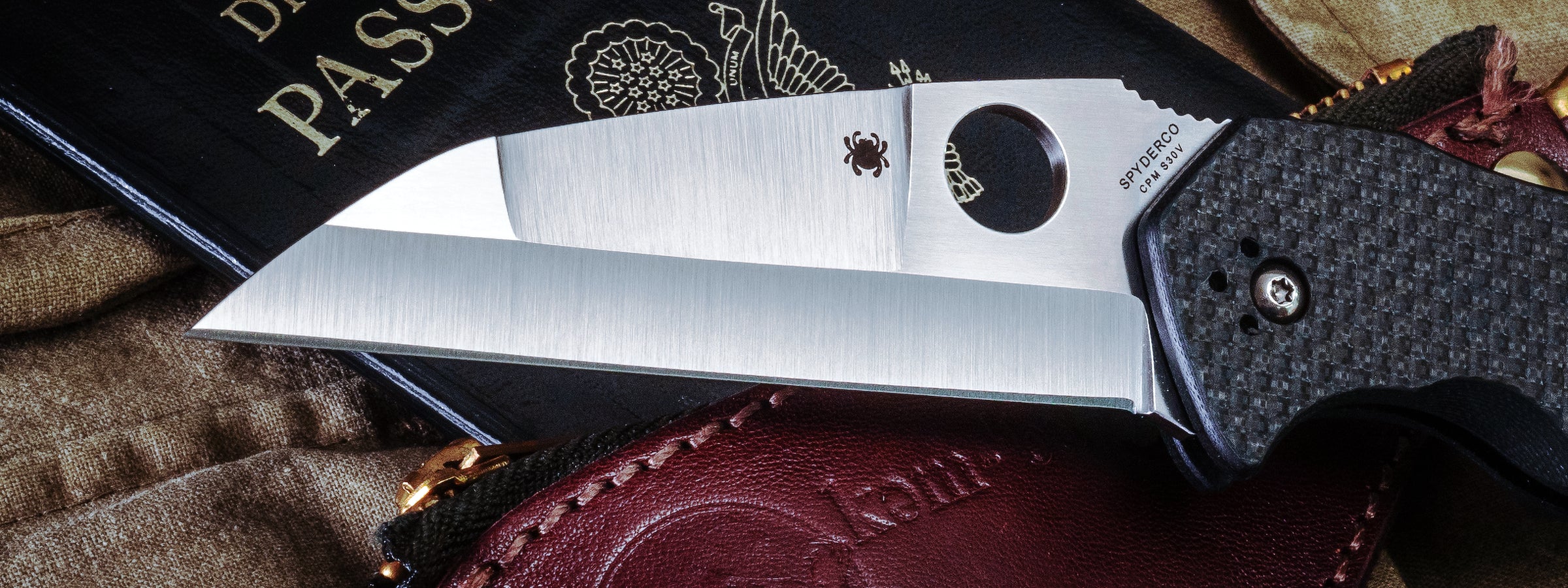Blade Grinds

Centerline Grind
Often found on daggers, this grind features both top and bottom bevels that meet at a raised center ridge.

False Edge
A false edge is a secondary, sharpened edge located on the spine of the blade near the tip. When unsharpened, it is referred to as a swedge. A false edge provides a secondary cutting edge for “back cut” tactics and enhances penetration during thrusting.

Flat Saber Grind
This grind takes the form of a flat plane that begins at the blade’s centerline and tapers to the edge. This geometry leaves the upper half of the blade full thickness, enhancing overall strength and durability while still offering excellent cutting performance. It is ideal for hard-use applications.

Full-Flat Grind
This grind consists of a continuous flat bevel that extends from the spine all the way to the cutting edge. This geometry minimizes friction during cutting and creates an exceptionally acute point.

Hamaguri Grind
Literally meaning a type of clam in Japanese, this “clamshell” grind is also known as an apple seed or Moran grind. It is characterized by convex bevels that taper all the way down to the sharpened edge. Often created by slack-belt grinding, this grind produces a strong, very sharp edge that bites aggressively into the material being cut.

Hollow Grind
A hollow grind is characterized by concave bevels that taper down to the blade’s terminal cutting edge. This geometry minimizes the thickness of the blade behind the edge, giving it the potential for extreme sharpness and allowing it to be resharpened many times without changing its geometry. Hollow grinds can vary in depth and width depending on the knife’s intended use.

Single-Bevel Grind
Also called a chisel grind, this type of grind is ground only on one side of the blade. Its bevel may be flat, hollow, or convex, but typically produces an extremely acute edge angle. It is most commonly seen in culinary, woodworking, and specialty cutting tools.

Swedge
A swedge is an unsharpened bevel on the spine of a blade near the tip. Swedges can reduce the knife’s overall weight, shift its point of balance, and enhance penetration. A sharpened swedge is considered a false edge.

Zero Grind
This grind is very similar to a flat grind, but without a secondary bevel at the terminal cutting edge. A zero-ground edge extends the plane of the bevel all the way to the cutting edge, producing an extremely keen, low-friction edge geometry.

Zero-Ground Saber Grind
Also known as a Scandinavian or “Scandi” grind, this style features flat bevels that begin near the blade’s centerline and continue uninterrupted to the edge, without a secondary bevel. The preferred choice of many bushcrafters, it offers excellent control for woodworking, carving, and precision field use.


